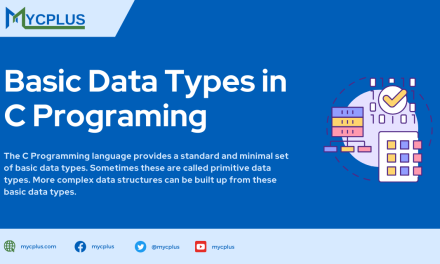In June 2000, Microsoft introduced the .NET platform, accompanied by a fresh programming language known as C#. If you’re just embarking on your C# and .NET journey, let’s delve into what C# is all about.
Table of Contents
- What is C#?
- What is .NET Platform?
- Why Choose C# .NET?
- Entering the World of C# .NET – Your First Program!
What is C#?
C# (pronounced “C sharp“) is a contemporary programming language designed to be simple, modern, and object-oriented. It’s born from the roots of C and C++ which makes it instantly recognizable for those familiar with these languages. In essence, C# aims to bring together the ease of use found in Visual Basic with the robust capabilities of C++. This language is strongly typed, object-oriented, and meticulously crafted to strike a balance between simplicity, expressiveness, and performance.
What is .NET Platform?
Now, let’s talk about the .NET platform. Picture it as the heartbeat of the C# language. At its core is the Common Language Runtime (CLR), somewhat akin to a Java Virtual Machine (JVM). Additionally, there’s a set of libraries that various languages can tap into. These languages collaborate seamlessly by compiling into an intermediate language (IL), creating a harmonious environment.
C# and .NET have a symbiotic relationship. Certain features in C# are tailored to complement the capabilities of .NET, and conversely, specific aspects of .NET are designed to align seamlessly with C#. However, it’s worth noting that .NET is versatile, aiming to accommodate a plethora of programming languages.
For aspiring C# developers, even though C# is a relatively new language, it grants full access to the extensive class libraries utilized by seasoned tools like Visual Basic and Visual C++. It’s important to highlight that C# itself doesn’t come bundled with its own class library but leverages the wealth of resources provided by the broader .NET ecosystem. This opens up a world of possibilities for crafting robust and feature-rich applications. So, buckle up and get ready to explore the dynamic synergy of C# and .NET!
Why Choose C# .NET?
In a vast sea of programming languages, the question arises: why add yet another to the mix? With options like Visual Basic, Java, and C++, it may seem like the language landscape is already well-covered. Critics argue that C# is essentially Microsoft’s answer to Java, but as we explore further, we’ll find that the similarities are only skin-deep.
C# addresses a contemporary challenge: the demand for a language adept at thriving in a distributed programming environment. Gone are the days when applications resided solely on local area networks or in remote access setups between satellite offices. Today’s applications might find themselves on a partner corporation’s desktop tomorrow. The uncertainty of an application’s eventual destination poses a unique challenge – one that C# tackles head-on.
In the past, a development cycle might span several years, but today, companies gauge application delivery schedules in months, granting developers limited timeframes. C# empowers developers to produce code more efficiently than ever before. However, speed alone is not the sole focus; the code must also be free of bugs, and here again, C# steps in to meet the need for robust and error-free applications. In essence, C# .NET is not just another language; it’s a tailored solution for the challenges of contemporary distributed programming, rapid development cycles, and the need for bug-free code.
Entering the World of C# .NET – Your First Program!
C# .NET is known for its straightforward and user-friendly nature, making it an excellent choice for beginners. Let’s dive into the simplest program you can write in C# .NET – the classic “Hello, World!”
1 2 3 4 5 6 7 8 9 10 11 12 13 14 15 16 | // Calling Namespace using System; // Defining Namespace namespace HelloWorld { // Defining Class class MainClass { // Program Entry Point static void Main() { Console.WriteLine("Hello, World!"); } } } |
This concise program demonstrates the essential structure of a C# .NET application. Don’t worry if it seems a bit unfamiliar at first – we’ll break it down in upcoming tutorials. For now, just enjoy the satisfaction of making your computer greet the world with a friendly “Hello!”






